B- Form and Function
1- Molecules: Carbohydrates and Lipids, and Proteins

Carbon atoms can form four single bonds or a mix of single and double bonds with other non-metal elements.
Scientific terms like 'kilo', 'centi', 'milli', 'micro', and 'nano' follow international standards.
Large molecules (macromolecules) are made by joining small units (monomers) in condensation reactions. They can be broken down into monomers by hydrolysis, which uses water.
Glucose is a stable, water-soluble sugar that can be used for energy in cells.
Polysaccharides like starch and glycogen store energy. They are compact and don’t dissolve in water.
Cellulose is a tough plant fiber made of straight chains linked by hydrogen bonds.
Glycoproteins help cells recognize each other, like in blood types.
Lipids (fats, oils, waxes, and steroids) dissolve in non-polar liquids.
Triglycerides in fat tissue store energy and keep the body warm.
Phospholipids form membranes with water-loving and water-fearing parts. This allows certain hormones like testosterone and oestradiol to pass through.
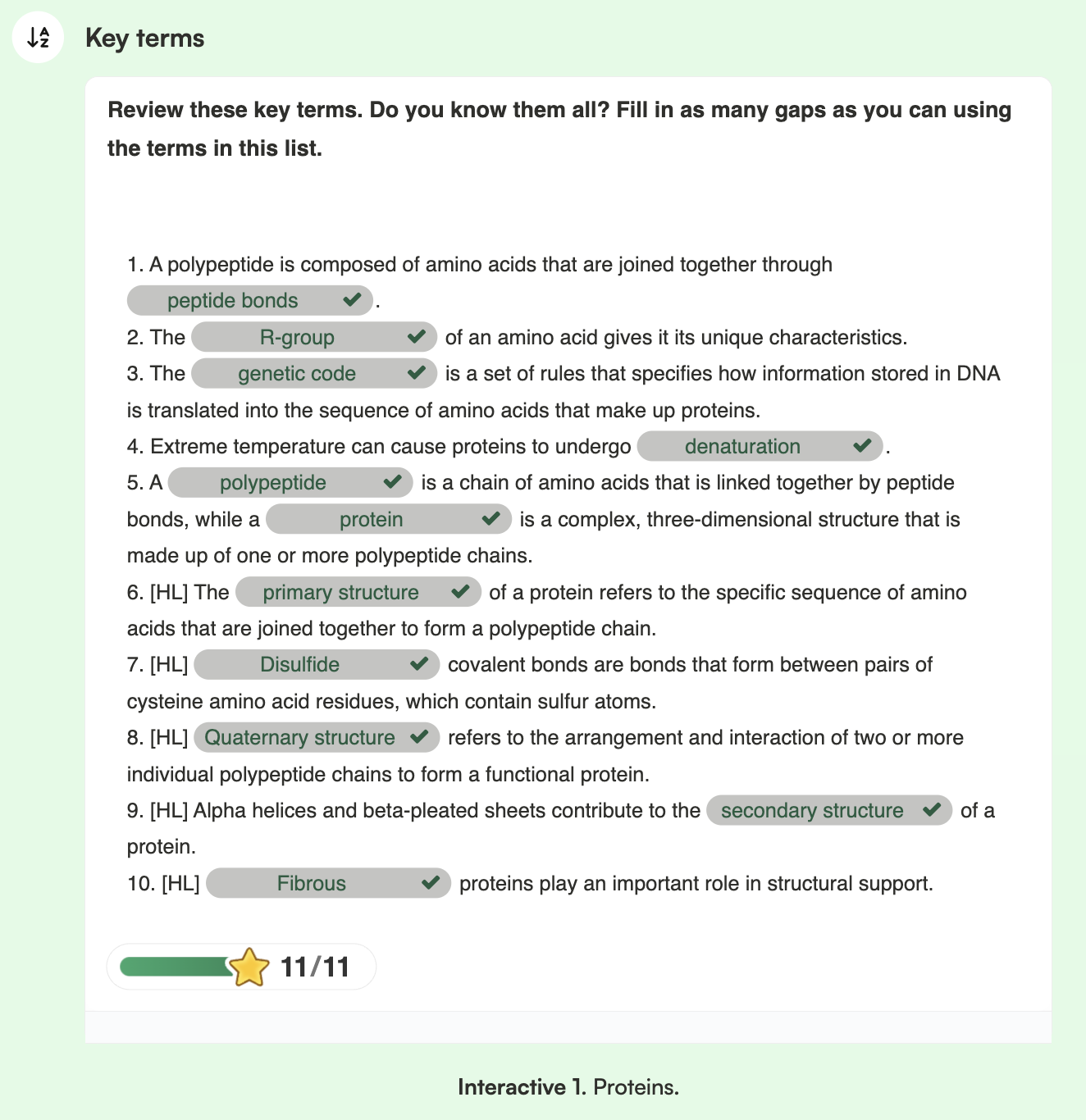
Each of the 20 amino acids has a central carbon (alpha carbon) attached to an amine group, a carboxyl group, a hydrogen atom, and a unique R-group.
The R-group gives each amino acid its special properties.
Amino acids link together in condensation reactions to form proteins, creating peptide bonds.
Essential amino acids must come from food because the body can't make them.
Non-essential amino acids can be made by the body.
The genetic code uses 20 amino acids and gives instructions to build proteins. This code is the same in all living things.
High temperatures or extreme pH can break bonds in a protein, causing it to unfold or denature and lose its shape.
2- Cells: Membranes and transport, Organelles and compartmentalization, and Cell Speciation
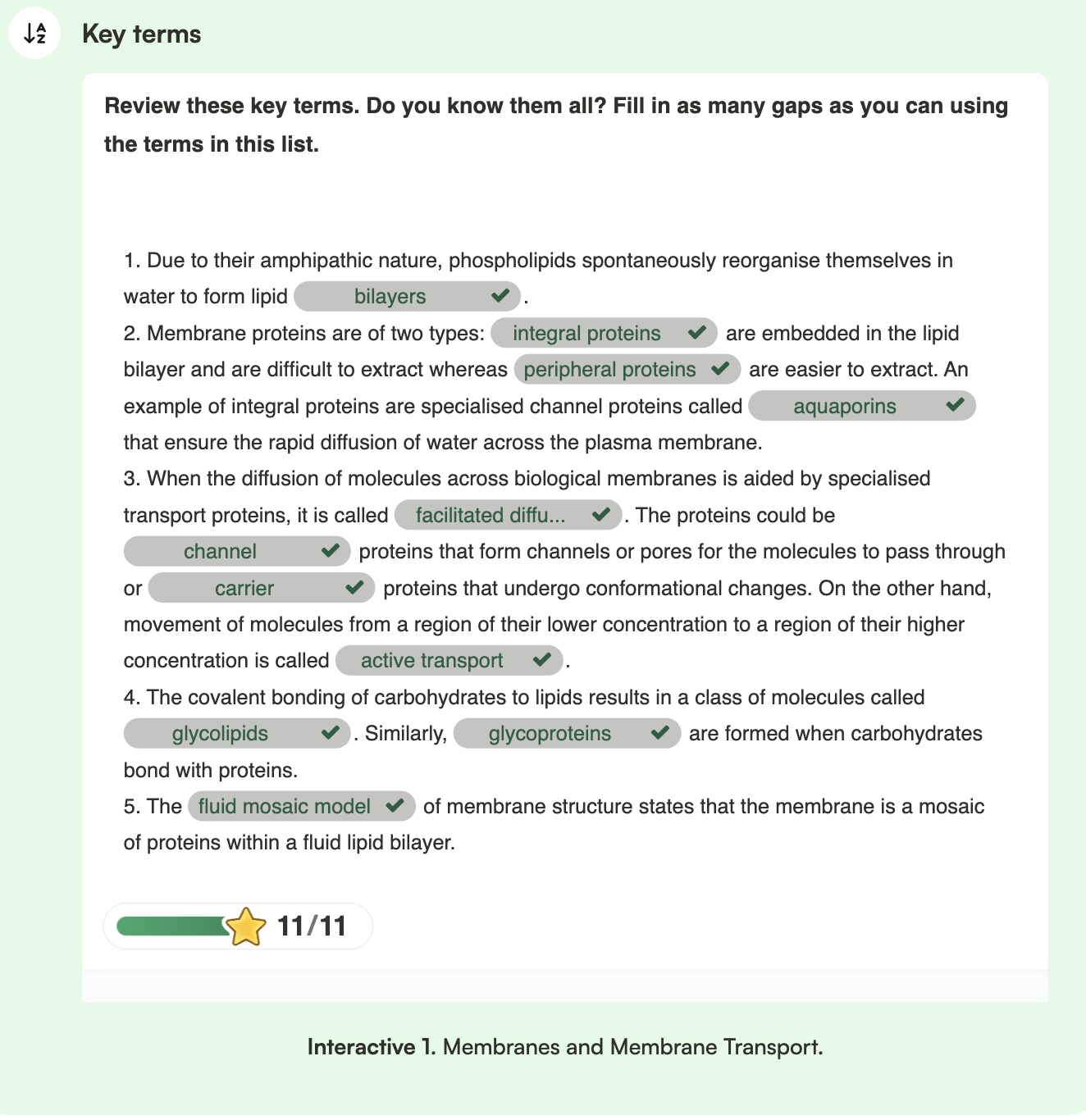
Cell membranes are made of lipids, proteins, and a little cholesterol.
Proteins in the membrane are either integral (inside the membrane) or peripheral (on the surface).
Phospholipids have water-loving and water-fearing parts, so they form a bilayer in water. The inside part blocks many substances.
Molecules move across the membrane by:
Simple diffusion (no energy, small non-polar molecules),
Facilitated diffusion (no energy, uses channel proteins like aquaporins for water),
Active transport (needs energy/ATP to move substances).
The membrane only lets certain substances through – it's selectively permeable.
Glycoproteins and glycolipids help cells stick together and recognize each other.
The fluid mosaic model shows the membrane as a flexible layer with moving proteins.
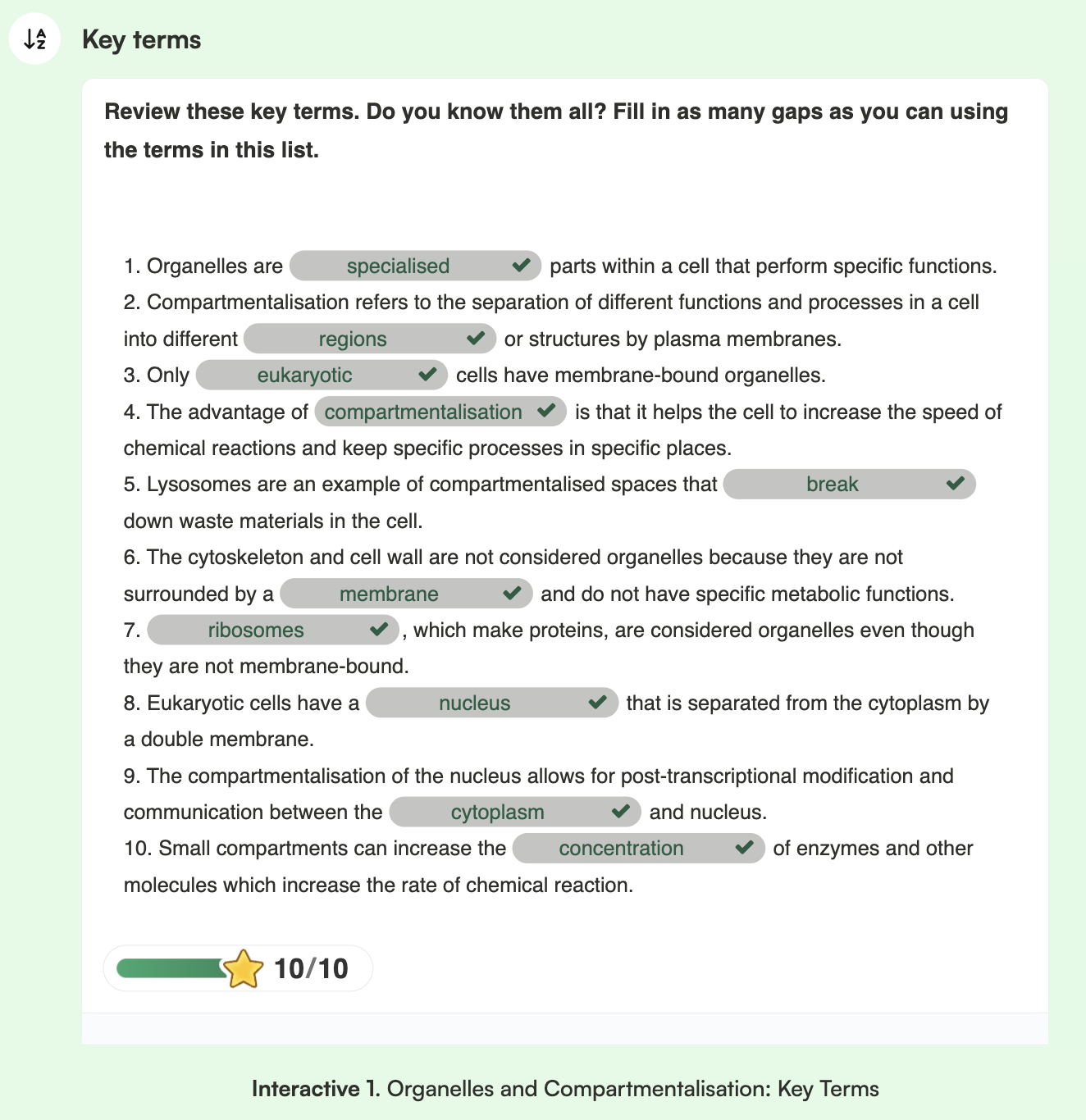
Organelles are specialised structures in cells with specific functions.
Compartmentalisation allows for the development of specialised cell structures.
Ribosomes are organelles, but the cytoskeleton, cell wall and cytoplasm are not c
onsidered organelles.
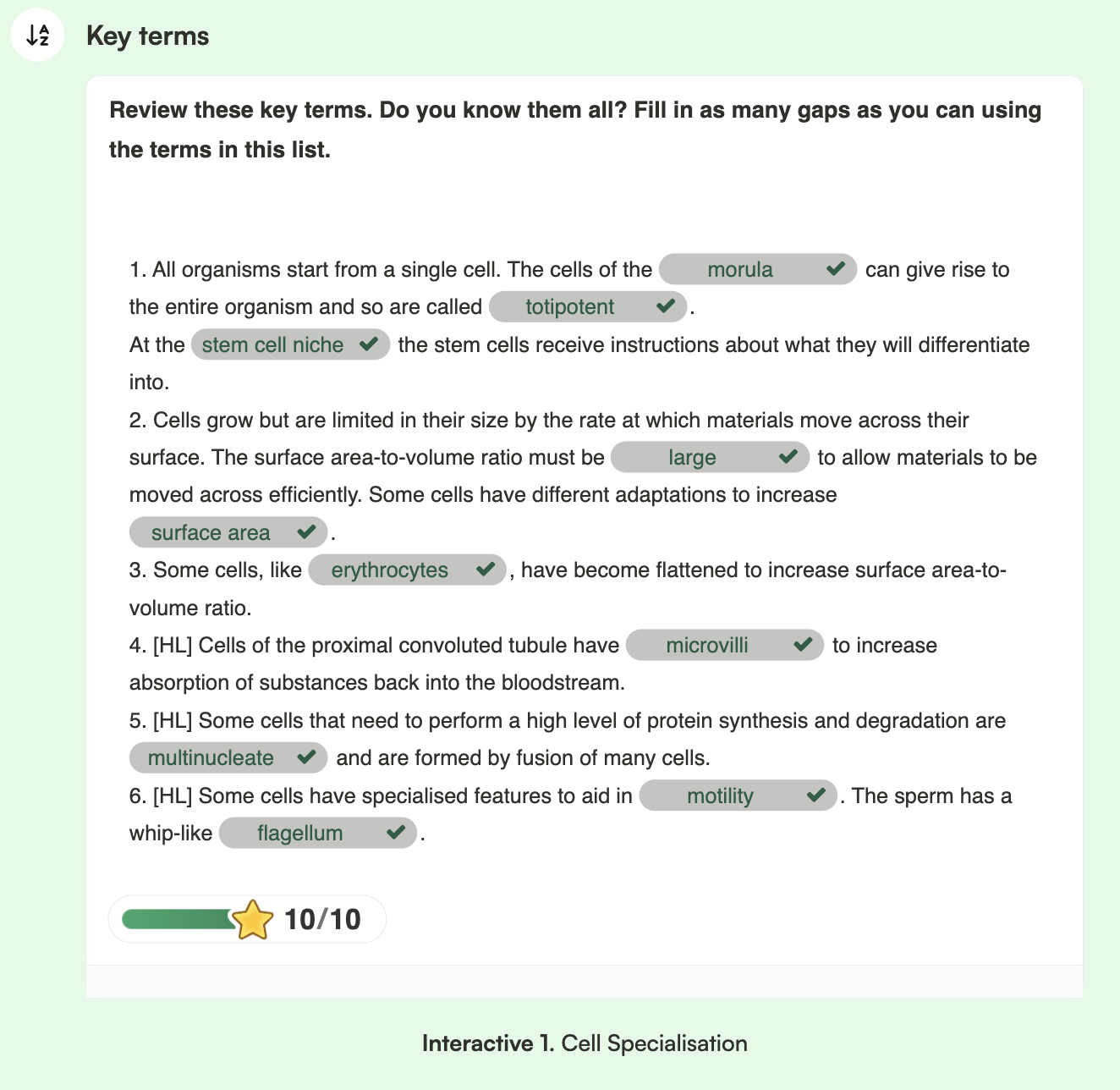
After fertilisation, the first cells are unspecialised.
Morphogen gradients in the early embryo control which genes are turned on or off, guiding development.
There are different types of stem cells, each with the ability to become specific kinds of cells.
A stem cell niche is the special environment that gives stem cells signals about what to do.
Human cells come in many sizes and do many different jobs.
A cell's size and surface area affect how fast materials can move in and out of it.
3- Organisms: Gas Exchange, and Transport
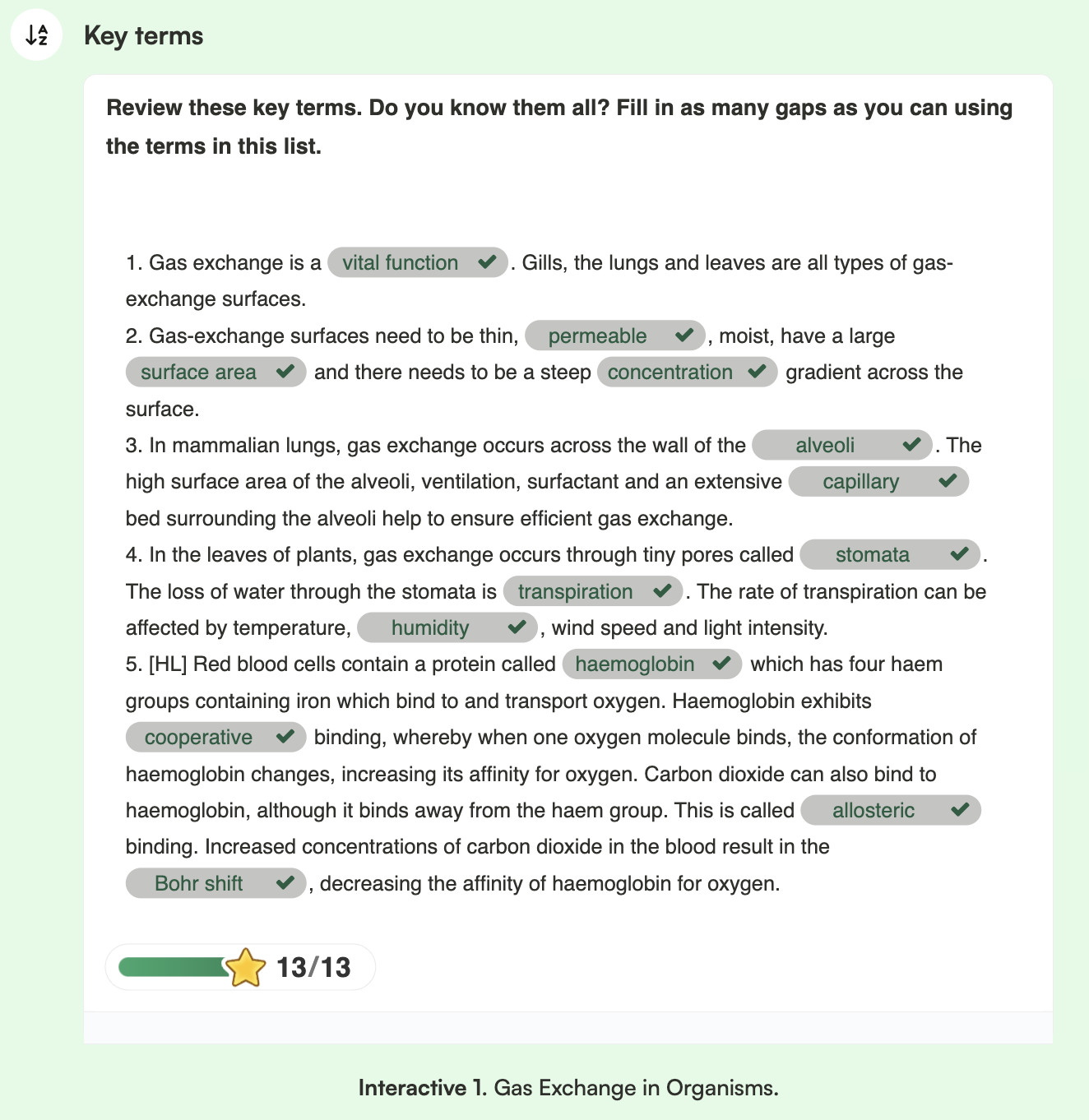
As organisms get bigger, their surface area-to-volume ratio gets smaller, so they need special gas-exchange surfaces (like lungs, gills, or leaves) to get enough oxygen.
Good gas-exchange surfaces have:
Large surface area
Thin walls (short diffusion distance)
Moist surfaces
Steep concentration gradients, helped by blood flow and breathing (in animals).
In mammals, lungs are used for gas exchange. They have tiny sacs called alveoli where oxygen and carbon dioxide are exchanged.
Ventilation (breathing) moves air in and out using the diaphragm and intercostal muscles. Abdominal muscles help in forced breathing out.
A spirometer measures lung volumes and can check lung health.
In plants, leaves are the gas exchange organs. They have small pores (mostly underneath) for gas exchange.
Transpiration is the loss of water from leaves. It’s affected by temperature, wind, humidity, and light.
Stomatal density is how many stomata are in a given area. It’s calculated by dividing the number of stomata seen by the area viewed.
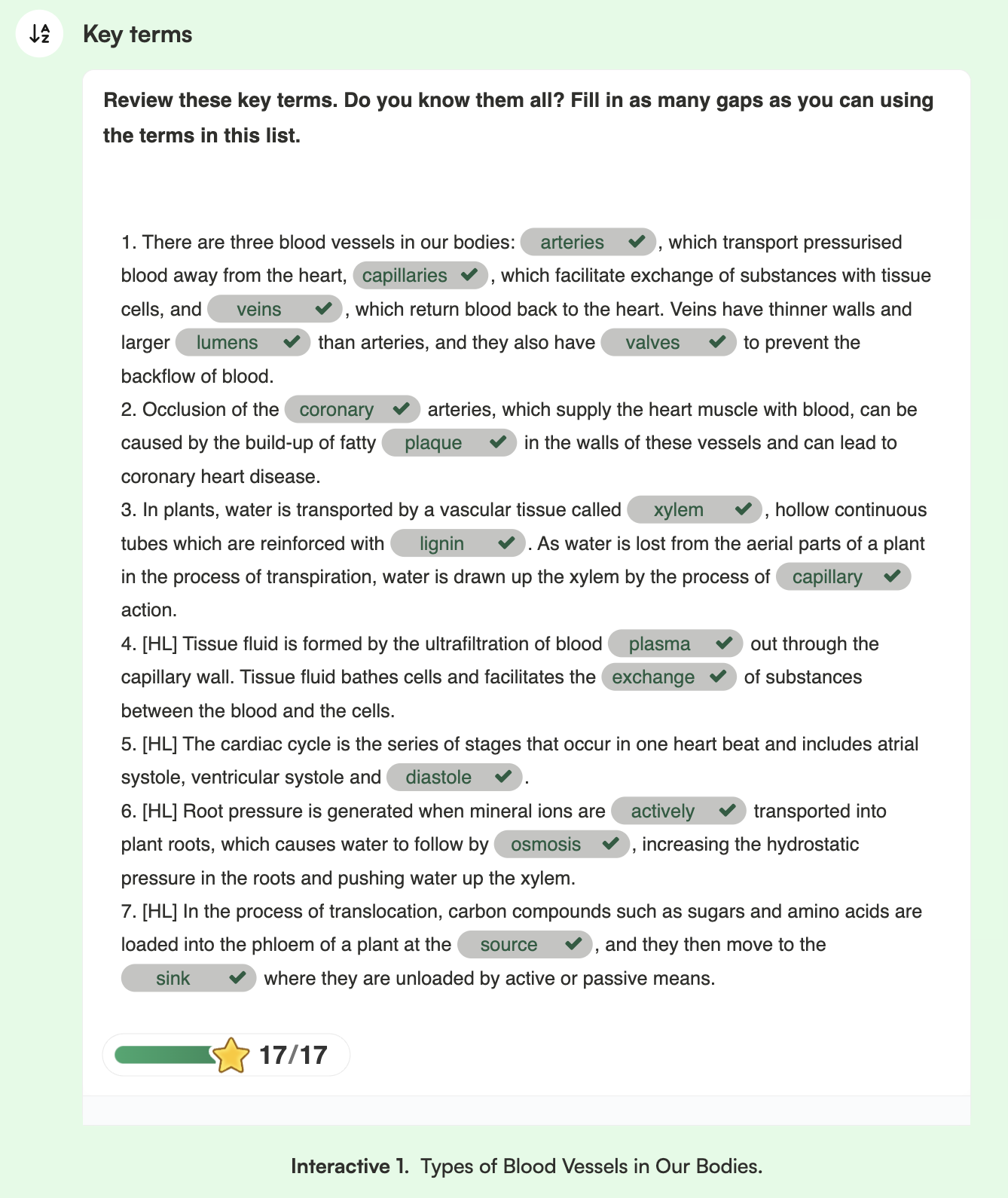
The body has three types of blood vessels:
Arteries carry blood away from the heart under high pressure. They have thick, strong walls.
Capillaries are tiny vessels where substances are exchanged between blood and tissues. They have thin, leaky walls and a large surface area.
Veins carry blood back to the heart. They have thin walls, large openings (lumens), and valves to stop blood from flowing backward.
Pulse rate (or heart rate) is how many times the heart beats in a minute—normally 60–100 bpm—and can be measured by hand or with a device.
Coronary arteries bring blood to the heart muscle. If they get blocked by fatty plaque, it can cause coronary heart disease by reducing blood flow.
In plants, xylem carries water. It's a hollow tube strengthened with lignin.
Water is pulled up through the xylem by transpiration from the leaves, using capillary action.
4- Ecosystems: Adaptation to environment, and ecological niches
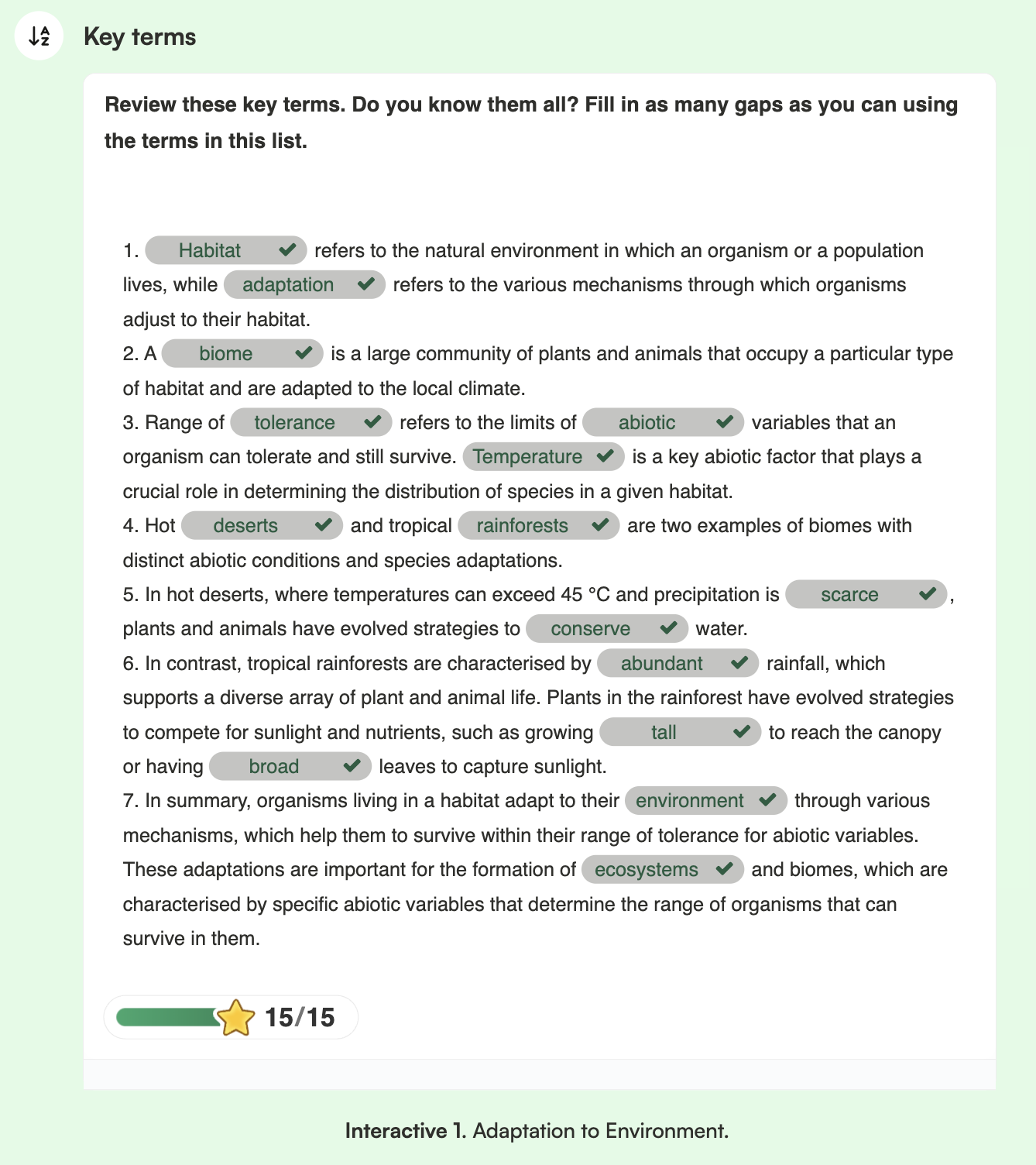
A habitat is the place where an organism, population, or community lives.
Organisms adapt to their non-living (abiotic) environment through genetic, physiological, or behavioural changes.
Plant adaptations in sand dunes: deep roots, water storage, and ways to reduce water loss.
Animal adaptations in mangroves: removing salt, breathing air, and crabs feeding on dead leaves.
Abiotic factors like temperature, rainfall, soil, and light affect where species live.
A species' tolerance range for a limiting factor sets its survival boundaries.
Coral reefs need warm (20–30 °C), clear, alkaline, nutrient-rich water with lots of light.
Temperature and rainfall control where different biomes (like deserts and rainforests) are found.
A biome is a group of ecosystems with similar environments and living things.
Plants and animals are highly adapted to survive in both hot deserts and tropical rainforests.
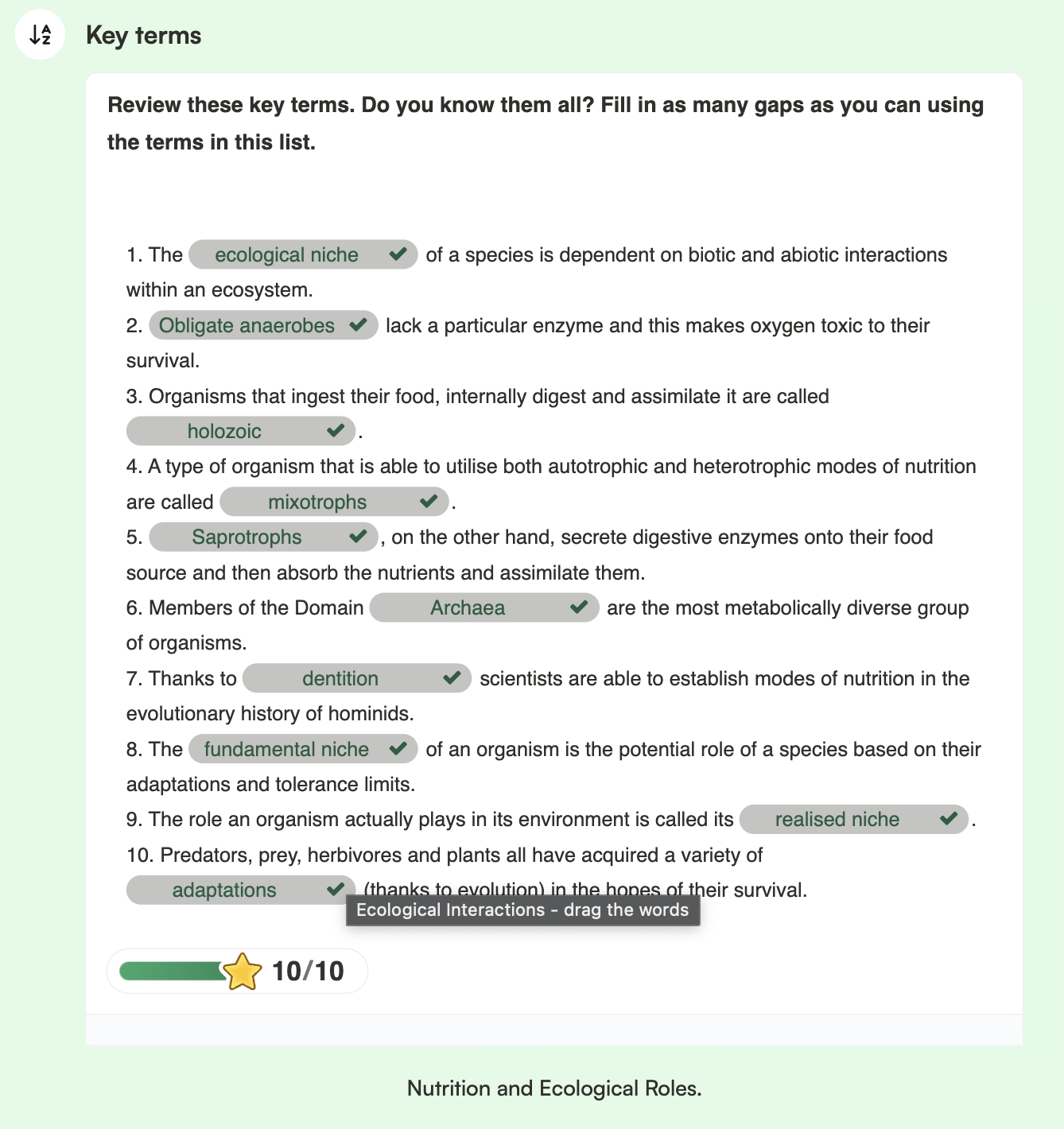
A species' ecological niche is its role in the ecosystem, shaped by living (biotic) and non-living (abiotic) factors. These affect how it survives, grows, reproduces, and gets food.
Organisms have different oxygen needs:
Obligate anaerobes – survive without oxygen
Facultative anaerobes – can live with or without oxygen
Obligate aerobes – need oxygen to live
Photosynthetic organisms (like plants, algae, and some bacteria) make their own food using sunlight.
Animals are heterotrophs, meaning they eat other organisms. They use holozoic nutrition: food is eaten, digested, absorbed, and used.
Mixotrophs (like plankton and Euglena) can get energy from both sunlight and eating. Some must do both, others can choose.
Decomposers like fungi and bacteria use saprotrophic nutrition – they release enzymes to break down food outside their bodies, then absorb it.
Life is divided into three domains:
Eukarya (organisms with complex cells)
Bacteria
Archaea (very diverse, can get energy from light, inorganic chemicals, or carbon)
Humans are holozoic and need teeth to chew. Fossils show how tooth shape relates to diet (e.g., plant-eaters vs. meat-eaters).
All organisms have adaptations to survive:
Herbivores are built to eat plants.
Predators and prey use tricks like camouflage, speed, or poison.
Plants have features to capture as much light as possible.
Every organism has a niche—its role in the environment:
Fundamental niche – what it could do based on its traits
Realised niche – what it actually does due to competition
If two species compete for the same niche, one may be pushed out or both will have smaller niches (competitive exclusion).